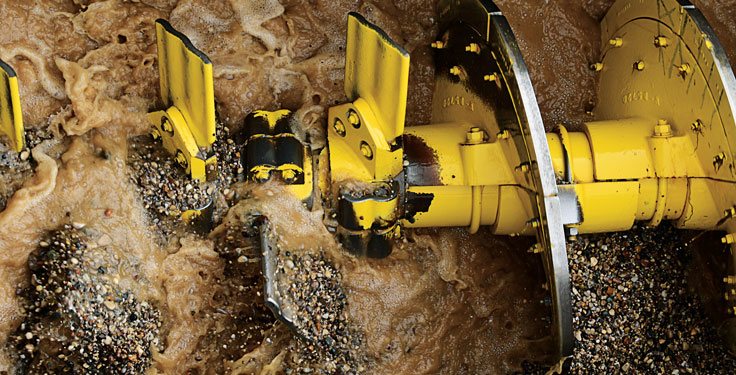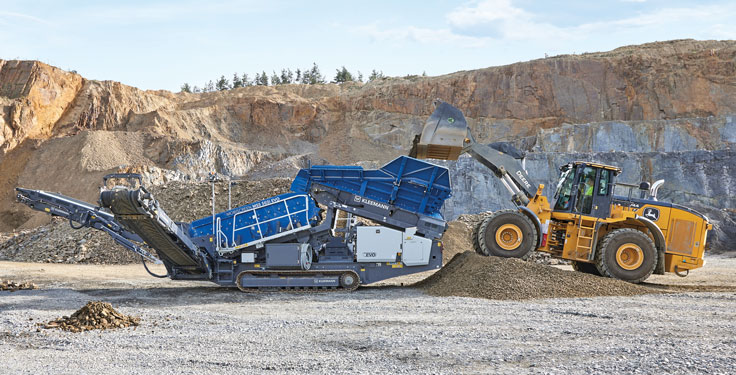Coarse material washers are essential to aggregates, ensuring deleterious materials are removed to create a clean final product.
To maintain efficiency and extend the lifespan of coarse material washers, regular and thorough maintenance is crucial.
Six steps to follow
1. Do regular inspections. Establishing a complete inspection schedule is key to effective maintenance.
Conduct daily, weekly, monthly, quarterly, six-month and yearly inspections to ensure all components are in good working order. Regular inspection of components such as paddles and wear shoes help to identify wear or damage, allowing users to address issues before they worsen and ensuring continuous and efficient operation.
2. Monitor bearings and motors for excessive heat and noise. Bearings and motors are vital components of a coarse material washer. Regularly monitoring them for signs of excessive heat and unusual noise can help to prevent potential issues.
Overheating can lead to premature failure, while unusual noise may be a sign of misalignment or wear. Early detection of these problems can prevent costly repairs and downtime.
3. Check the oil level regularly. One of the simplest yet crucial maintenance tasks is to check the oil level regularly.
Proper lubrication is essential to reduce friction and wear on moving parts. Ensure the oil level is within the manufacturer’s recommended range. Using the correct oil type is equally important to maintain optimal performance.
4. Inspect v-belts for proper tension and alignment. V-belts are critical for the operation of coarse material washers. Check them regularly for proper tension and alignment.
Misaligned or loose belts can cause slippage, reducing efficiency and increasing wear on belts. V-belts that are too tight may snap as a result of the tension. Adjust them as needed to ensure they operate smoothly and effectively.
5. Inspect the rubber cover protecting the spider and flanges. The rubber cover protecting the spider and flanges on the drive member is vital to prevent contamination and damage. Regularly inspect this cover for signs of wear or damage, and replace it if necessary.
Keeping the cover in good condition helps to protect critical components from debris and moisture.
6. Remove excess grease from the outboard bearing vent opening relief slot. Excess grease can accumulate in the outboard bearing vent opening relief slot, leading to overheating and increased wear.
Nine out of 10 failed bearings do so because this area is plugged with grease. Regularly remove any excess grease to ensure proper ventilation, as well as to prevent potential damage to the bearings.
Final thoughts
Proper maintenance of a coarse material washer is key for its efficient and long-term operation.
Inspecting the components of a coarse material washer only takes a short amount of time and helps you to plan for future replacements and reduce unscheduled downtime.
Related: Equipment to enhance washing, classifying operations
Information for this article courtesy of EIW.












